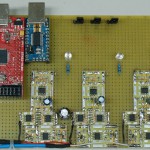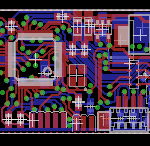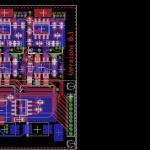Some time ago I announced the Open-BLDC project in the Mikrokopter Forum, the post, that you can find here inspired a very interesting Discussion. One of the topics were PWM Schemes and why one should think about them. The most important reason is efficiency. Most controllers to use H_PWM_L_ON or H_ON_L_PWM schemes. An alternative is PWM_ON_PWM scheme which prevents currents through freewheeling diodes connected in parallel to the MOSFET’s. The freewheeling diodes have higher losses then a MOSFET. I am really asking myself why it is not used. One reason I can think of is that this scheme has 12 steps instead of 6 and therefore is more difficult to implement and BEMF measurement for commutation detection may be more complicated.
Another approach to the efficiency question may be using fieldvector control. This involves a sinusoidal pwm scheme and current measurement on the phases. Using that way of control should decrease torque ripples which are typical the other schemes mentioned above. It also involves a lot more work on the firmware side.
I started building a rig for testing the efficiency of the different schemes. It involves a harddisk platter connected to the motor and two harddisk magnets. At the end I will have a eddy current break and can measure how much current is needed to achieve a specific rotation speed. I hope that this way I will be able to make a more or less scientific comparison of control approaches.
If you have a motor controller I would be really happy if you could take an oscilloscope and record the voltages on the phases. I am really interested what control schemes others use.


